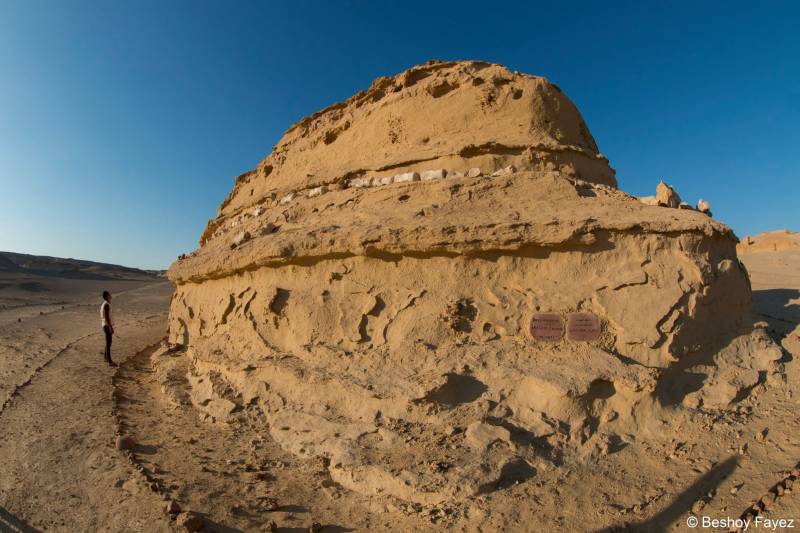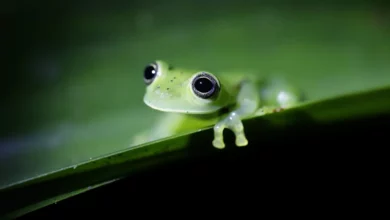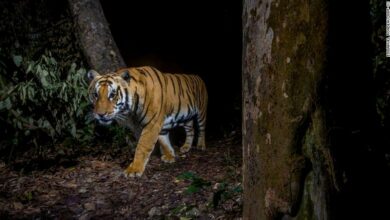This article is part of Al-Masry Al-Youm’s weekly “Endangered Species” series, covering Egypt’s endangered flora and fauna.
Egypt’s gazelle population has decreased consistently and drastically for the past four decades mainly due to two factors: unregulated hunting practices and habitat destruction.
Three species of gazelle used to live across Egypt. The Arabian gazelle is thought to have completely disappeared, as the most recent footprints of this mammal were found in the 1930s in Wadi al-Arish at the border with Israel.
The slender-horned gazelle’s population is difficult to estimate, but according to Omar Attum, professor of biology at Indiana University Southeast who closely studies Egypt’s gazelles, the number of slender-horned gazelles is likely no higher than a hundred.
“Slender-horned gazelles have low population densities. There have been some records of them in Siwa recently, but I really worry as the revolution in Libya has made weapons more widely available in a very large and porous border area,” he explains, stressing that whenever there is an armed conflict anywhere in the world, wildlife is threatened.
Richard Hoath, British naturalist and author of the book, “A Field Guide to the Mammals of Egypt,” explains that the population of slender-horned gazelles is limited to an area southwest of Fayoum. “This gazelle is strictly a desert species; it is able to survive without drinking water its entire life, provided it can feed on desert shrubs and bushes,” he explains animatedly.
The most common gazelle in Egypt today is the Dorcas gazelle, which lives in stony deserts and coastal plains with vegetation. Gazelles in desert areas play an important role of keeping the ecosystem balanced, as some plants can only spread if the gazelle eats their seeds. For example, the hard coat that surrounds the acacia tree seed can only be broken by passing through the gazelle's digestive tract, after which the seed can grow in another location when it is defecated.
The other major role played by the gazelle as one of the last big mammals in Egypt is to supply food for scavengers and vultures, which depend on gazelles for survival.
Although the Dorcas gazelle used to be widespread in both the Eastern and Western Deserts and Sinai, today its population, which has been shrunk due to indiscriminate hunting and is now believed to number roughly 1000, is mostly scattered in the Eastern Desert and South Sinai. “Although this gazelle is the most likely to be seen, it is threatened by hunting practices that involve 4-wheel drive [vehicles] and high-powered rifles,” explains Hoath.
Attum explains that in the 1970s and 80s, pick-up trucks became affordable and hunters abandoned traditional hunting techniques for machine guns and racing cars that could chase gazelles in open desert areas at 100km an hour. The gazelle’s constitution is capable of withholding enough energy to outrun a cheetah, its only animal predator, but is incapable of holding out if chased by a speeding pick-up truck for too long, Attum says. “It eventually collapses and dies,” he adds.
Aly Hamdy is an environmentalist and a retired hunter. He is a well-respected figure among conservationists and naturalists and an unconditional nature lover. “I hunted gazelles in the 80s, and at the time it was not exceptional to spot one on a main road, and there were plenty around Lake Nasser,” he says. With a smile, he adds that “traditional hunters are animal lovers, they have to know the species and their habitat well to anticipate their behavior. We also make sure to preserve the beauty of the nature we tread and the animals for future generations to see,” he adds.
He condemns hunting practices involving machine guns and pick-up trucks that have been developing in Egypt, and says that some of these hunters go out at night to hunt with spotlights on the 4-wheelers.
But hunting is not the only threat to Egypt's gazelles: habitat destruction through the concreting of coastal areas has also proven harmful to gazelles, who have to abandon these areas that are blessed with more rainfall and food. “Dorcas gazelles, who thrive in coastal areas, have seen their habitat bulldozed by real estate developers,” explains Hoath, who adds that human settlements have introduced competition over food resources for the gazelles. “Dogs and cattle have been introduced in those areas, and food supplies have diminished. Also, dogs harass gazelles and can be a real threat to the[ir] babies, which don’t have the capacities of a grown gazelle to escape them.”
Rangers have been trained in some protected areas to try to protect their gazelle populations, and in Saint Catherine and Wadi al-Gamal, nature reserve authorities have trained ex-hunter Bedouins to protect these species. As Hoath says, “the legislation exists to protect wildlife in Egypt; what is sorely lacking is enforcement.”




